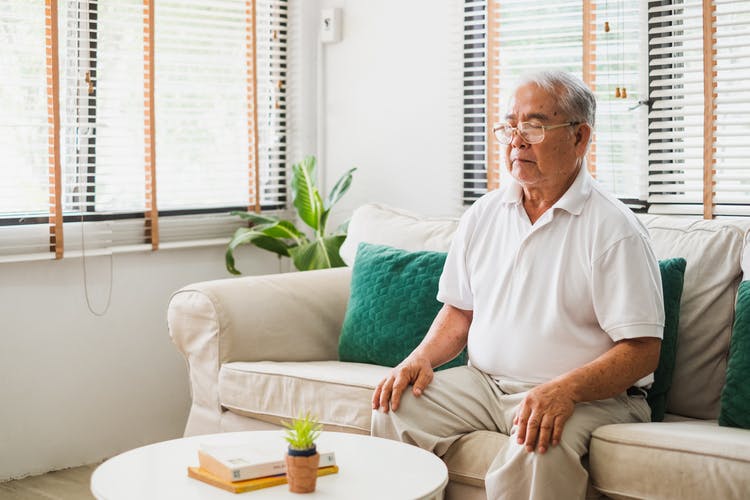Mental Practice in Stroke Rehabilitation
This article is currently under review and may not be up to date. Please come back soon to see the finished work! (15/11/2021)
Original Editor - Venkata Nagaraj Mummadisetty
Top Contributors - Rochelle Dsouza, Ilona Malkauskaite, Rucha Gadgil, Kim Jackson, Nikhil Benhur Abburi, Venkata Nagaraj Mummadisetty, Lauren Lopez, Scott Buxton, Naomi O'Reilly, Vanessa Rhule and Ally Youssouf
Introduction[edit | edit source]
Mental practice (MP) of tasks is a relatively new therapy that is receiving increasing attention within rehabilitation research. Mental practice often described as Motor Imagery or Mental Imagery involves an individual visualising performing a task or any bodily movement without having to physically perform it and thus resulting in stimulation of the neural system.
Richardson explains MP as “the symbolic practice of a physical activity in the absence of any gross muscular movements”[1].
While athletes and musicians have long known the benefits of the mental practice which is proven to be useful and well documented in improving their performance and thereby enhancing their sports training and other skills .[2] Several studies have been conducted among stroke patients to determine the effectiveness of MP to improve the performance of activities in daily living, to enhance gait speed and lessen the effects of unilateral neglect.
What is Mental Practice?[edit | edit source]
The primary theoretical interest of MP is, when we mentally rehearse an activity, the same muscles are activated as if we are performing the activity [1] So, over time, the mental rehearsal of such activities would induce some degree of motor learning as seen while physically rehearsing a task. Motor imagery can be started in the acute phase, subacute phase or chronic phase of rehabilitation. It is been shown that while motor imagery is helpful by itself, it's best when used as an adjunct to physical therapy. Many of the primary studies on motor imagery were designed to analyse whether motor imagery improved motor performance in athletes. During motor imagery and physical movement, the brain areas activated are similar as seen in recent brain scanning techniques. ”
Types of Mental Practice[edit | edit source]
- Kinesthetic motor imagery – visualising the feeling associated with performing the movement.
- Visual motor imagery – visualising the movement.
Evidence of Mental Practice in Stroke Rehabilitation[edit | edit source]
There have been multiple studies done to study the role of Mental Practice in Rehabilitation of Stroke in:
Upper Limb[edit | edit source]
- Braun et al [2] conducted a systematic review to determine the effectiveness of mental practice as an additional therapy on the recovery of arm function after stroke. Although, the single case studies indicated that mental practice was promising for the improvement of leg function. They concluded that further research, using clear definitions of the content of mental practice and standardized measurement of outcome, are needed to establish MP as an effective therapy.
- A systematic review was carried out by Barclay-Goddard et al[3] to investigate the effectiveness of mental practice to treat the upper extremity deficits in individuals with hemiparesis after stroke. The results showed that mental practice as an adjunct to other treatment methods was more effective in improving upper extremity function than the MP alone.
- Park et al [4] evaluated the effects of mental practice on stroke patients' upper extremity function and activities of daily living (ADL). Their results demonstrated significant improvements in the Action Research Arm Test (ARAT), the Fugl-Meyer assessment (FMA), and the Modified Barthel Index (MBI) scored which concluded that the mental practice is effective at improving stroke patients’ upper extremity function and daily activity performance.
Functional task training and Activities of Daily Living(ADL)[edit | edit source]
- Cha et al [5] performed a meta-analysis to evaluate the efficiency of functional task training with mental practice in stroke. Results showed that functional task training with mental practice provided by occupational and physical therapists in stroke rehabilitation was functionally effective.
- Braun et al [6] conducted a meta-analysis further on to conclude that mental practice might have positive effects on the performance of activities in patients with neurological diseases given they have a good imagery ability, adherence and compliance to the intervention.
- D Gracia[7] conducted a systematic review in 2016[9] to examine the potential practicality and clinical effectiveness of MP in rehabilitation and functional recovery. They found MP to be effective, safe when used in conjunction with conventional physical therapy for functional rehabilitation of both upper and lower limbs, and the recovery of daily activities and skills. However, they concluded that further studies were needed to determine the optimal treatment protocol.
References[edit | edit source]
- ↑ 1.0 1.1 Richardson, A. Mental practice: A review and discussion (Part II). Research Quarterly, 1967; 38, 263-273.
- ↑ 2.0 2.1 Braun SM, Beurskens AJ, Borm PJ, Schack T, Wade DT. The effects of mental practice in stroke rehabilitation: a systematic review. Archives of Physical Medicine and Rehabilitation, 2006;6: 842-852.
- ↑ Barclay‐Goddard RE, Stevenson TJ, Poluha W, Thalman L. Mental practice for treating upper extremity deficits in individuals with hemiparesis after stroke. Cochrane Database of Systematic Reviews 2011;5.
- ↑ Park, J., Lee, N., Cho, M., Kim, D., Yang, Y. Effects of mental practice on stroke patients' upper extremity function and daily activity performance. Jrnl Of Phy Ther Sci, 2015; 27(4), 1075–1077. https://doi.org/10.1589/jpts.27.1075
- ↑ Cha YJ, Yoo EY, Jung MY, Park SH, Park JH. Effects of functional task training with mental practice in stroke: a meta analysis. NeuroRehabilitation, 2012;3:239-46.
- ↑ Braun S, Kleynen M, van Heel T, Kruithof N, Wade D, Beurskens A. The effects of mental practice in neurological rehabilitation; a systematic review and meta-analysis. Frontiers in Human Neuroscience, 2013;7:390.
- ↑ García Carrasco D, Aboitiz Cantalapiedra J. Efectividad de la imaginería o práctica mental en la recuperación funcional tras el ictus: revisión sistemática. Neurología. 2016;31:43–52.







